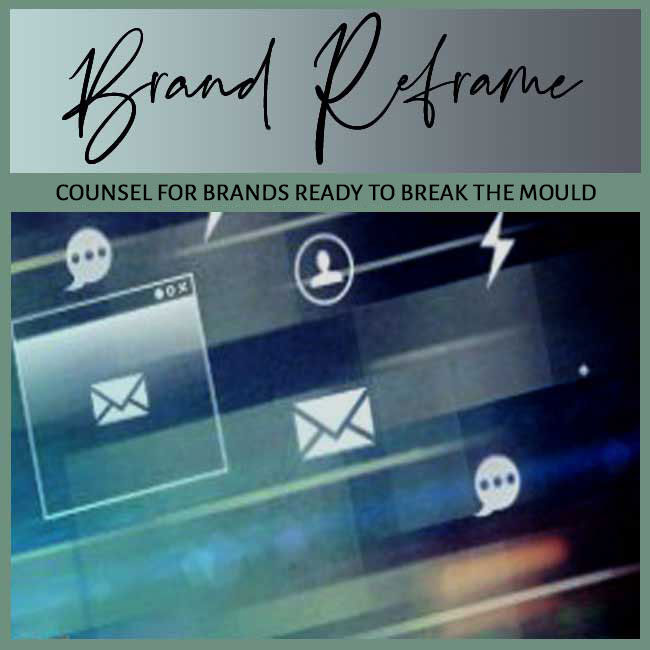
BY: SHOBHA PONNAPPA | BRAND BREAKTHROUGH STRATEGIST | 45 YEARS | 125+ CLIENTS
Brand visibility is the extent to which your brand is seen, recognised, and remembered by the right audience across the right touchpoints. It’s not just about being present … it’s about being noticeable and distinctive in a crowded market. High visibility means your brand is top-of-mind when customers consider a purchase, not buried under the noise of competitors.
As a Brand Breakthrough Strategist, I believe a visible brand doesn’t depend on chance encounters … it creates deliberate opportunities for exposure. Through consistent messaging, strategic placements, and a clear identity, it ensures that every interaction reinforces who you are and why you matter. When visibility is strong, customers don’t have to search for you … you’re already in their field of vision.
As you’d agree, we are in the “attention economy” where audiences are flooded with choices, and brands without visibility risk being ignored … regardless of quality or capability. Visibility is the bridge between your brand’s existence and its potential to generate engagement, loyalty, and revenue. Without it, even the most innovative offerings fade into obscurity.
In the midst of any fast-moving market, visibility must be sustained, not sporadic. Trends shift, competitors enter, and attention spans shorten. The brands that thrive are those that invest in maintaining a visible presence that evolves with the market while staying true to their core identity.
A consistent brand identity ensures your visuals, tone, and messaging align across every channel. It’s about building recognisability so that your audience can spot you instantly, whether in an ad, on social media, or in a press mention. Without consistency, visibility becomes fragmented, diluting impact and recognition.
Consistency doesn’t mean rigidity … it means maintaining a unified presence while adapting execution to fit different contexts. When done well, this coherence allows every touchpoint to reinforce brand recall and make your visibility efforts more efficient.
Relying on a single channel for visibility is risky … audiences interact with brands across multiple platforms. A multi-channel approach ensures you’re where your audience spends time, whether that’s online search, social media, events, or earned media. Strategic placement across these channels maximises opportunities for discovery.
The key is integration … making sure each channel reinforces and amplifies the others. A campaign launched on social media should echo in your PR efforts, extend into email marketing, and be supported by SEO-optimised content, creating a seamless visibility loop.
Collaborating with complementary brands, influencers, and communities can multiply your reach. Partnerships lend credibility, introduce you to new audiences, and position you within trusted networks. Done well, they create exposure that feels organic rather than forced.
These alliances work best when they’re mutually beneficial and strategically aligned with your brand values. The right partnerships not only expand visibility but also transfer trust, accelerating recognition and adoption.
Content that educates, inspires, or entertains has greater potential to be shared and remembered. High-value storytelling turns visibility from a passive glance into an active connection, giving audiences a reason to engage and return.
Storytelling should be consistent with your positioning but tailored to the audience’s needs and contexts. Whether through articles, videos, podcasts, or live events, compelling content ensures your visibility is not just frequent … it’s meaningful.
When launching or repositioning a brand, the first step is to secure a distinctive identity that can cut through market clutter. This includes defining your brand’s core message, visual identity, and tone of voice … all optimised for recognition across touchpoints. Early visibility efforts should focus on high-impact platforms where your target audience is most active.
Next, invest in building awareness momentum. This could mean a well-planned launch campaign, targeted digital ads, or strategic media coverage. The aim is to establish presence quickly and memorably, creating a foundation for long-term recognition.
Sustaining visibility requires disciplined consistency combined with adaptive strategy. It’s not enough to run campaigns in bursts … your brand should maintain a regular cadence of presence in both evergreen and trend-driven contexts. Regular audits help ensure you’re still showing up where your audience is looking.
Adaptation is equally critical. Platforms evolve, algorithms change, and audience behaviours shift. Brands that sustain visibility anticipate these changes and adjust their presence to remain relevant without losing their recognisable essence.
One common pitfall is confusing quantity with quality. Bombarding audiences with low-value, repetitive content might make your brand omnipresent, but it can also cause fatigue or indifference. True visibility comes from delivering relevance and resonance … not just frequency.
Another risk is over-reliance on one visibility channel or tactic. Markets shift quickly, and when a single platform’s algorithm changes or a media outlet loses influence, brands dependent on them can vanish from sight overnight. Diversifying visibility efforts reduces dependency and builds resilience.
A boutique hotel chain in Southeast Asia was struggling to stand out in a market dominated by international brands. I advised the brand to partner with travel influencers, curating photogenic experiences for guests, and ensuring its name appeared in top travel media, it turned sporadic bookings into consistent demand. The brand’s aesthetic became instantly recognisable, and its presence across Instagram, travel blogs, and booking platforms kept it top-of-mind for its niche audience.
A small coffee roaster wanted to compete with global chains without matching their ad budgets. I showed them how to build visibility by hosting local tasting events, creating shareable brewing tutorials, and collaborating with cafés to feature their beans. Within a year, their distinctive packaging and educational content had made them a staple in local coffee culture, increasing both recognition and retail demand.
This specialist legal consultancy had decades of expertise but minimal online visibility. I helped them launch a series of LinkedIn articles, speaking at industry conferences, and securing guest spots on niche podcasts, the firm positioned itself as the go-to authority in its field. Their name began to surface consistently in search results, leading to higher inbound client enquiries.
Entering a saturated fitness wear market, a start-up focused on underserved segments … smaller and plus-size athletes … and, as I showed them, they revealed their stories in every campaign. Strategic placements in inclusive fitness communities, collaborations with micro-influencers, and appearances at local sports events built strong awareness. Their brand became known not just for products, but for representing a movement.
A new SaaS product struggled to gain traction despite strong features. My advice to them included publishing case studies of early adopters, offering free trials to influencers, and integrating with popular tools in their industry … with this they created a wave of referrals. Within six months, they moved from being virtually unknown to being recommended on key industry forums and newsletters.
An artisanal jam producer relied solely on farmer’s markets for sales. I advised them to immediately go for expanded visibility through cooking demo videos, collaborations with local chefs, and seasonal product launches covered in local media. Each touchpoint reinforced their brand story and ensured they were seen regularly, even outside market days. The result was stronger recognition and wider distribution deals.
Brand awareness measures whether people know your brand exists, while visibility is about how frequently and effectively they encounter it in relevant contexts. A brand might be known but rarely seen, which limits its influence. Strong visibility ensures your brand is not only recognised but also regularly in front of the right people, reinforcing recall and preference.
The fastest way is to focus on high-impact channels where your target audience is already active and receptive. This could be through strategic partnerships, targeted digital ads, or a content piece that gains rapid traction. However, quick visibility must be supported by ongoing efforts … otherwise the spike will fade and leave no lasting impact.
Yes … by focusing on creativity, niche targeting, and consistent storytelling. Smaller brands can leverage community engagement, earned media, and organic content to gain disproportionate attention. When done well, these methods can build sustained visibility without the heavy costs of mass advertising.
Visibility can be measured through metrics like share of voice, search volume trends, social media reach, media mentions, and event participation. Qualitative indicators like brand recall surveys and sentiment analysis also reveal how visible and memorable your brand is in the minds of your audience.
Not necessarily … more visibility in the wrong contexts can dilute your positioning or reach audiences unlikely to convert. Effective visibility is targeted and strategic, ensuring that each appearance strengthens your desired perception and connects with the right market segments.
Sustained visibility builds familiarity, which is a foundation for trust. Over time, being consistently seen in relevant, credible spaces makes your brand easier to choose. This long-term effect compounds … the more often your audience sees you in meaningful ways, the less you need to compete on price or fight for attention later.
Explore Brand Visibility Gaps … Real Cases & Fixes
Case Studies
FAQ Insights

"One BIG IDEA can turn brand stagnation into unstoppable movement. Spots are limited each week ... book your breakthrough session now."
Shobha Ponnappa
My Definitive Guides to Other Critical Branding Concepts
Smart insights, real-world frameworks, and idea-driven clarity – designed to help brands move.
Get my fortnightly Brand Reframe newsletter. Smart insights, distilled thinking, and focused momentum to help your brand lead.

Get my free AI strategy guide. Smart prompts, sharper briefs, and practical ways to make AI support your brand momentum.

Just fill in the form to join. Get my newsletter and the guide shown alongside, all with several game-changing tips.